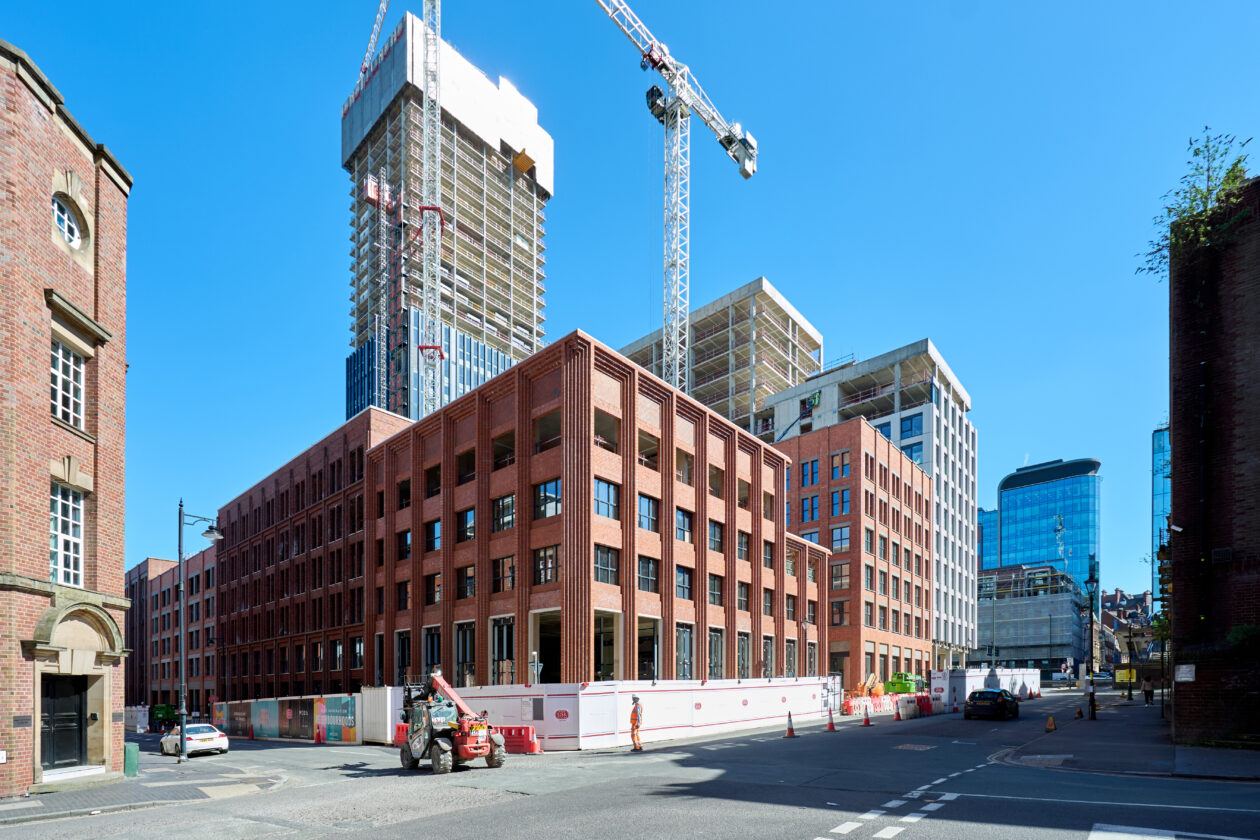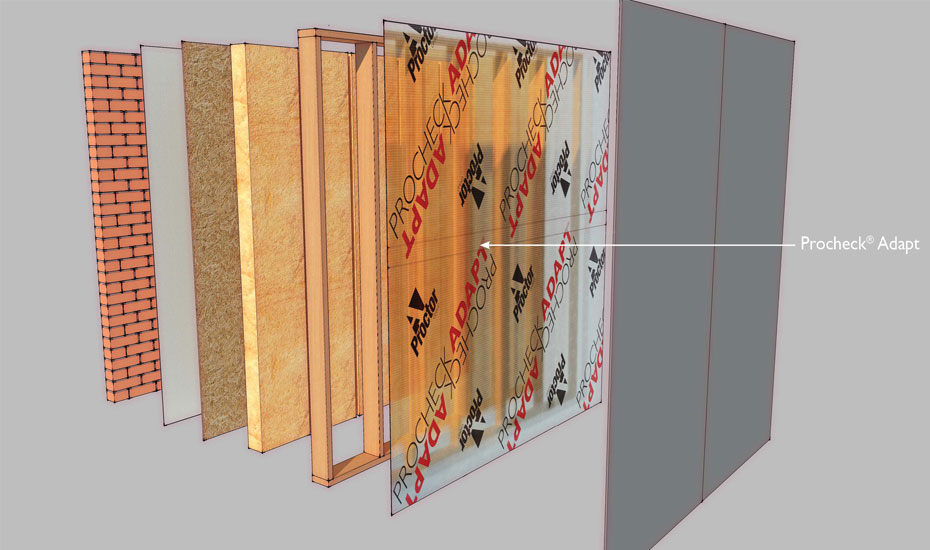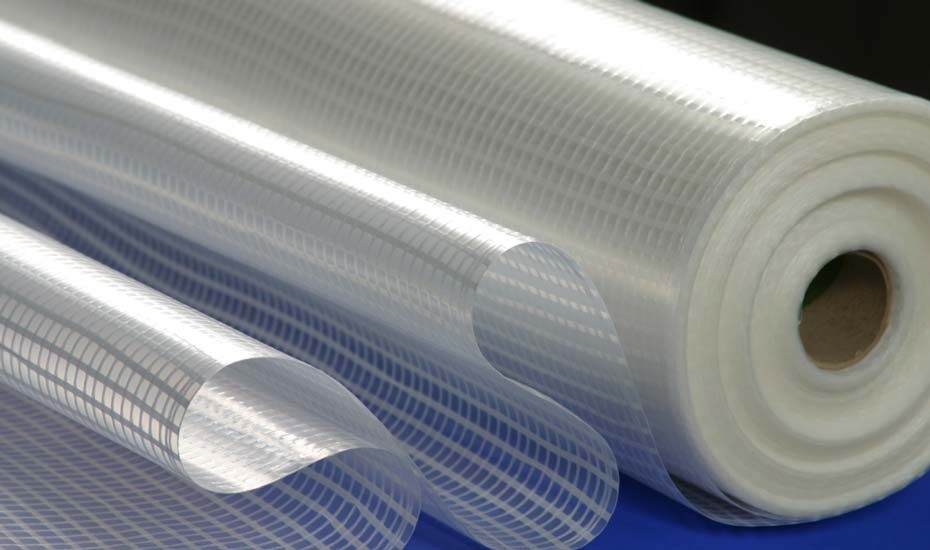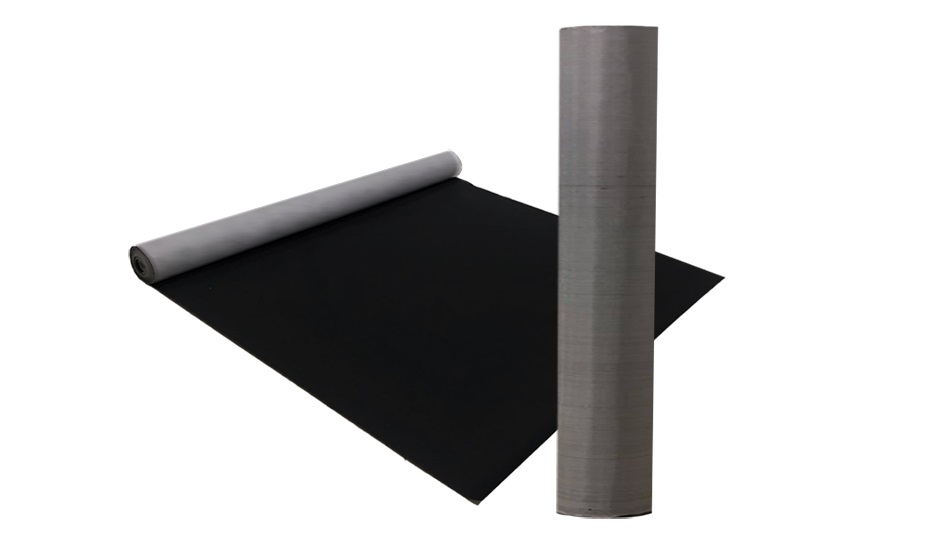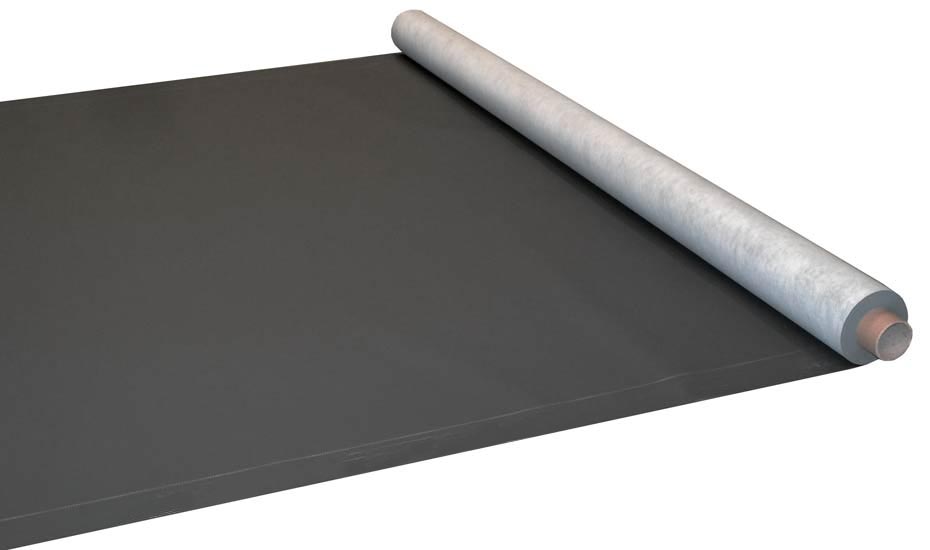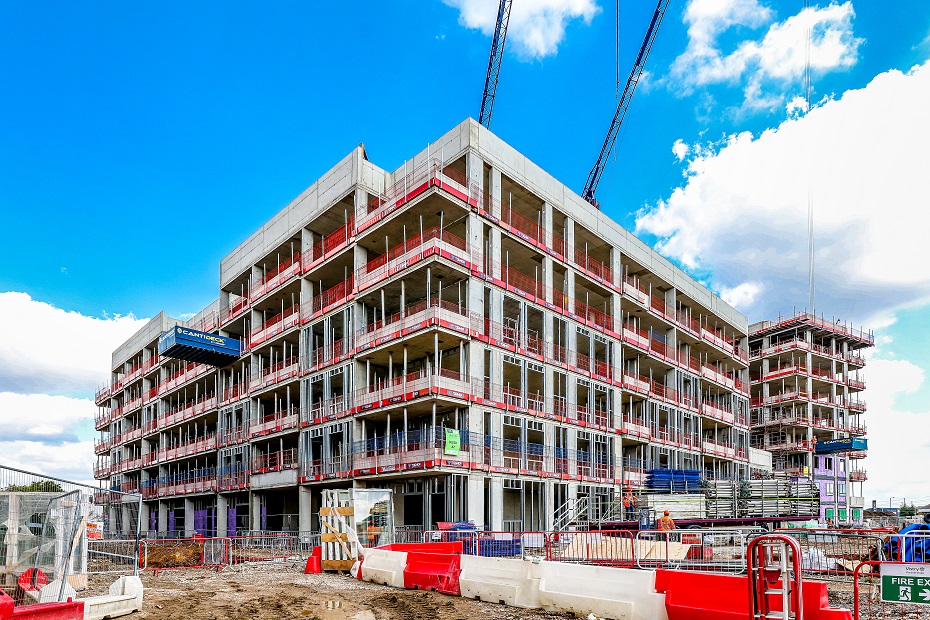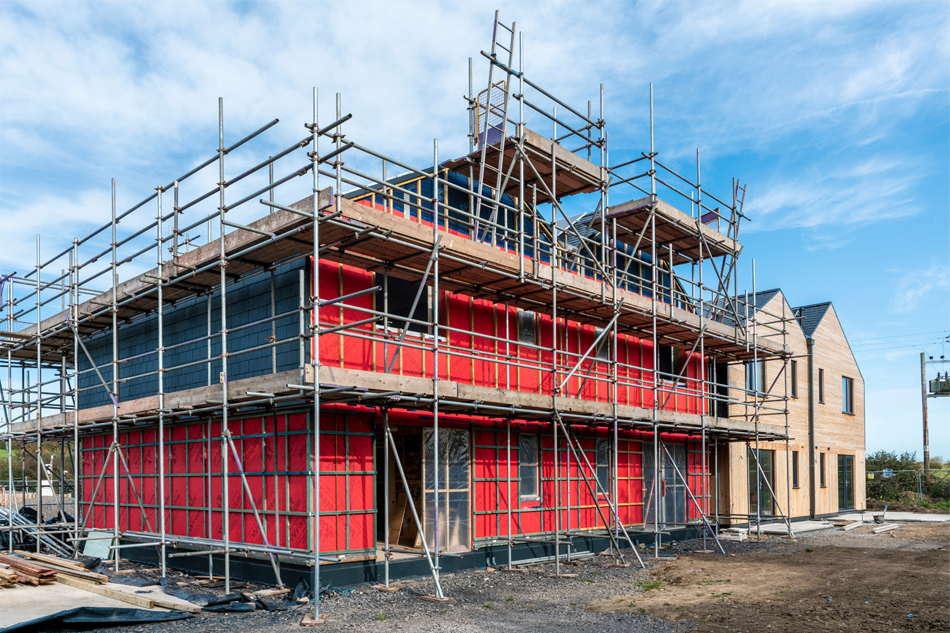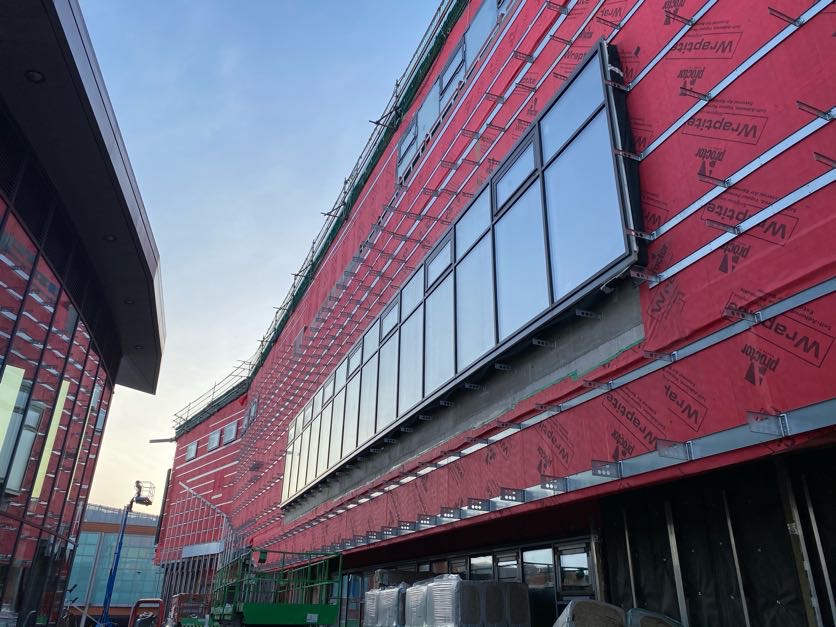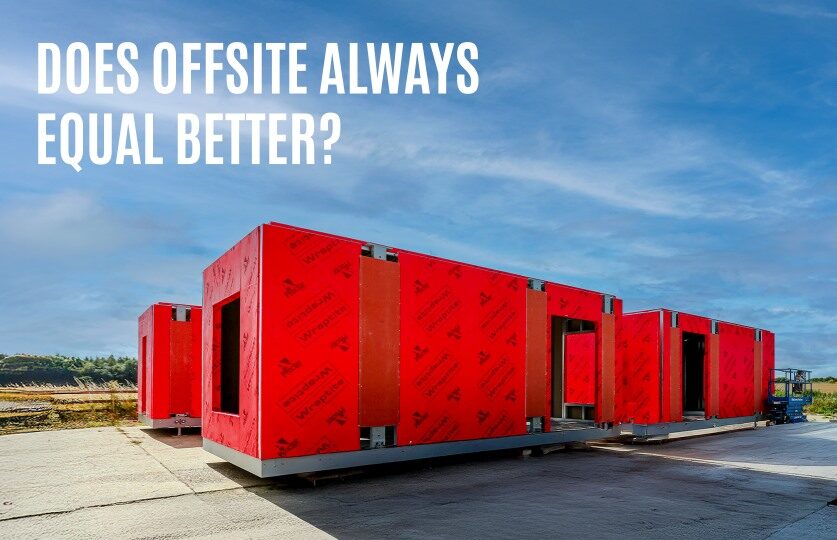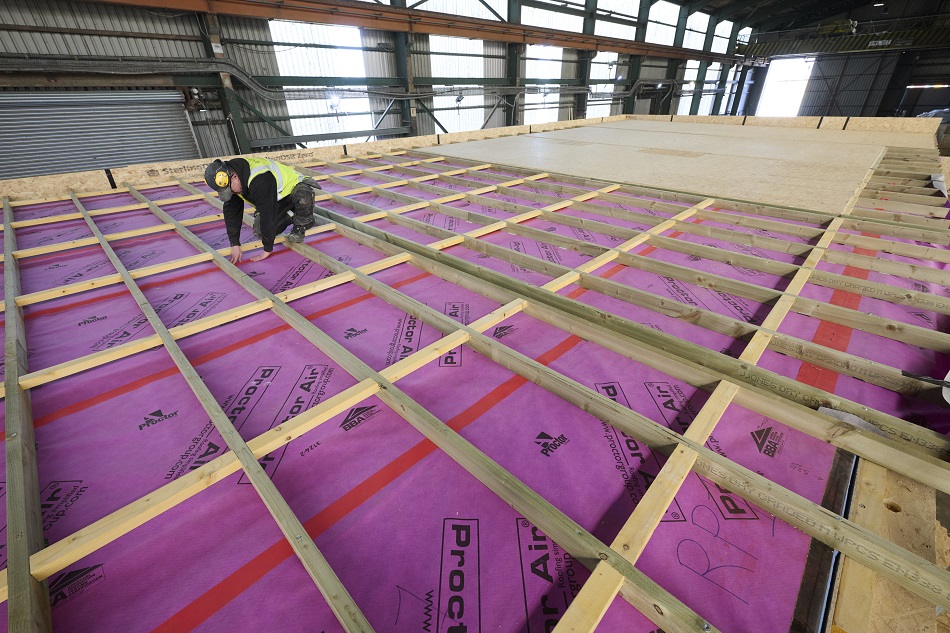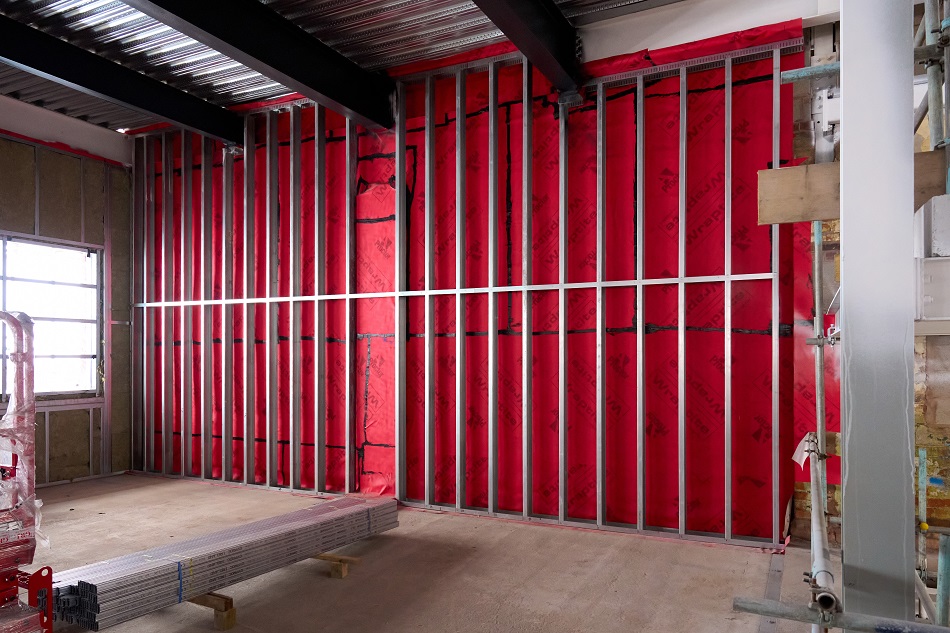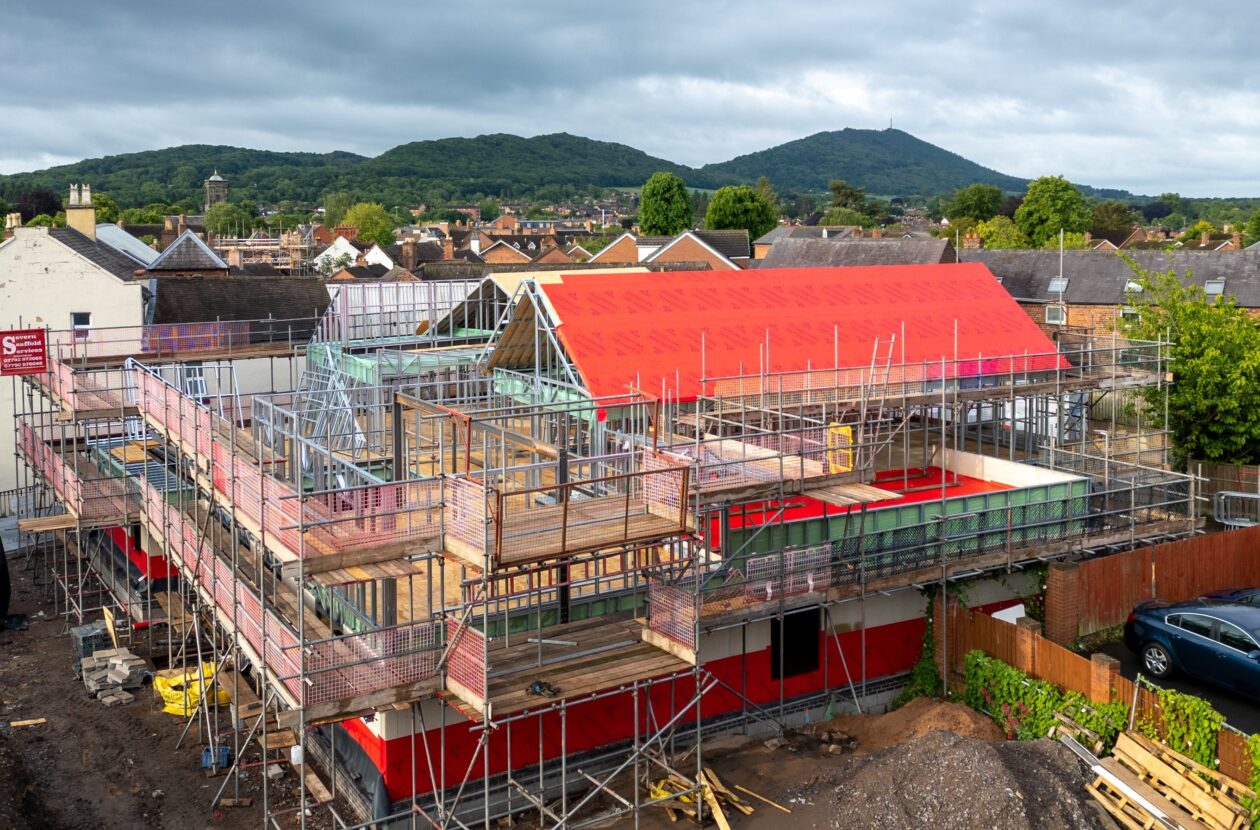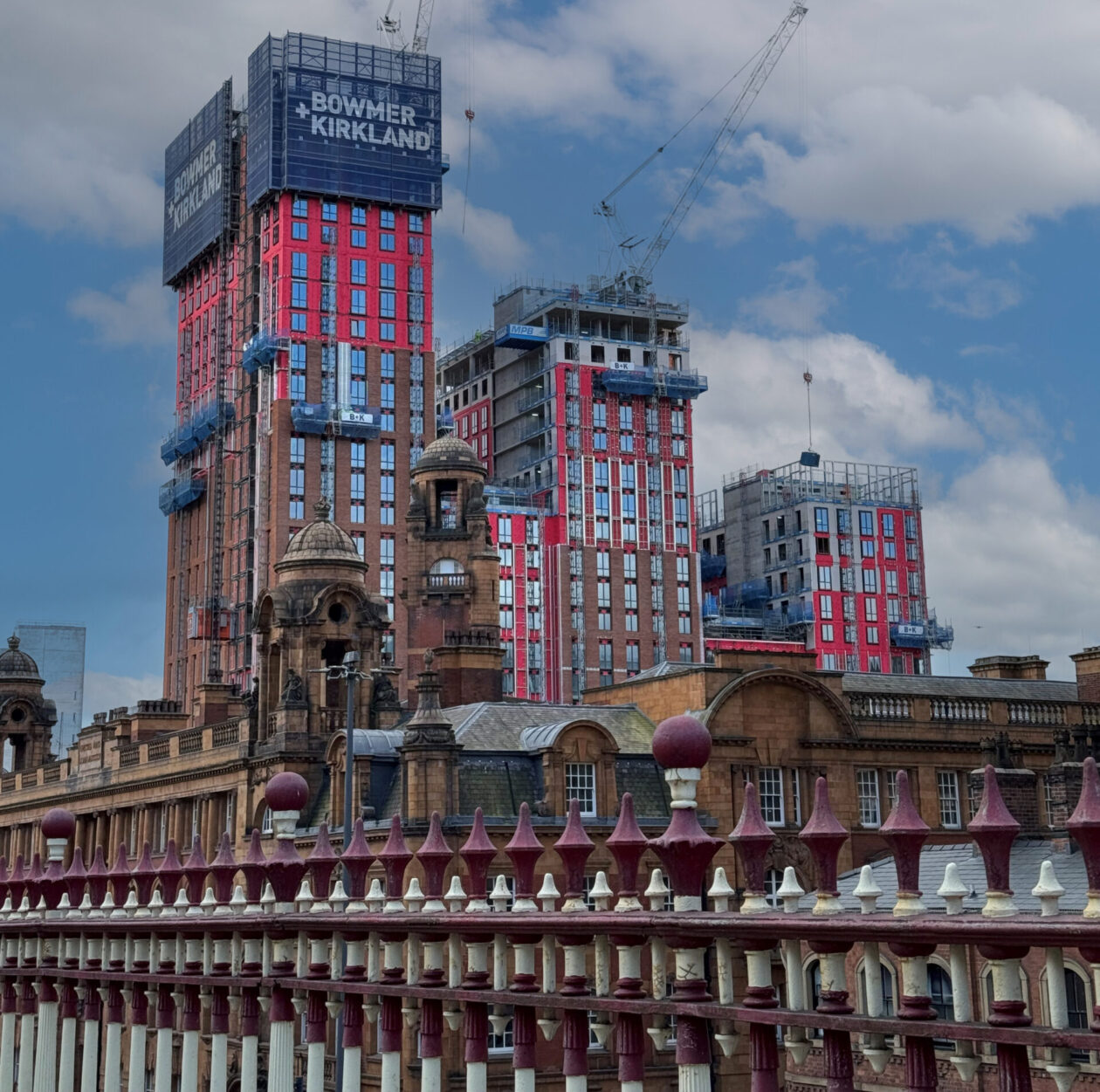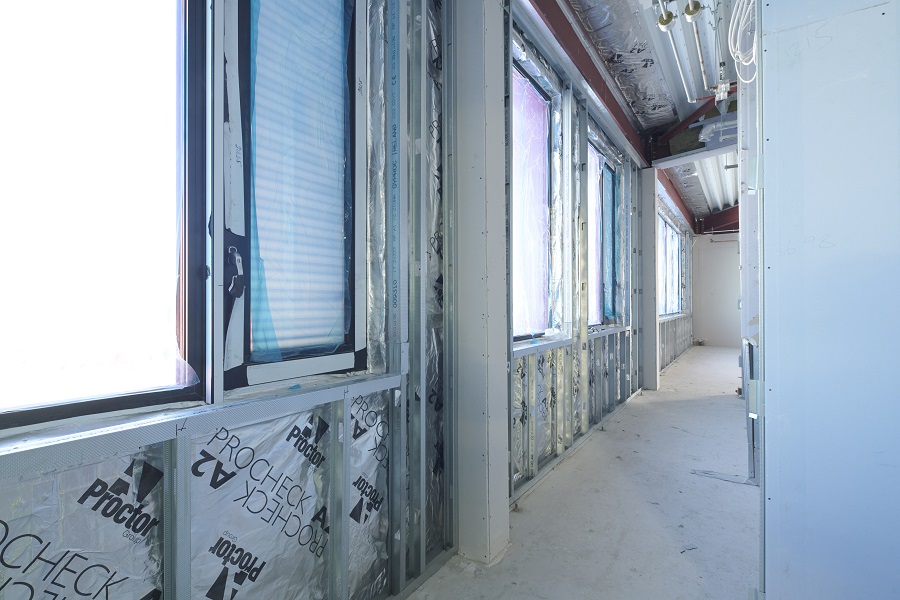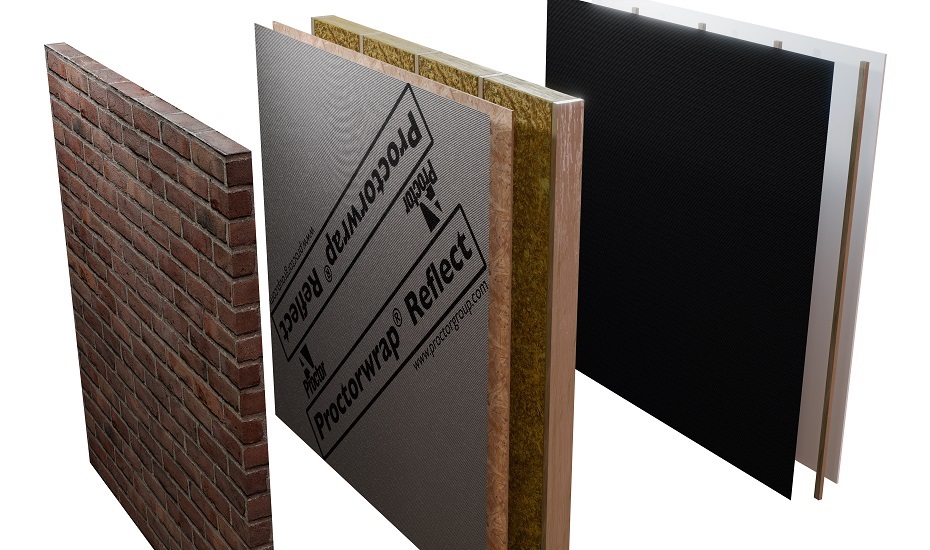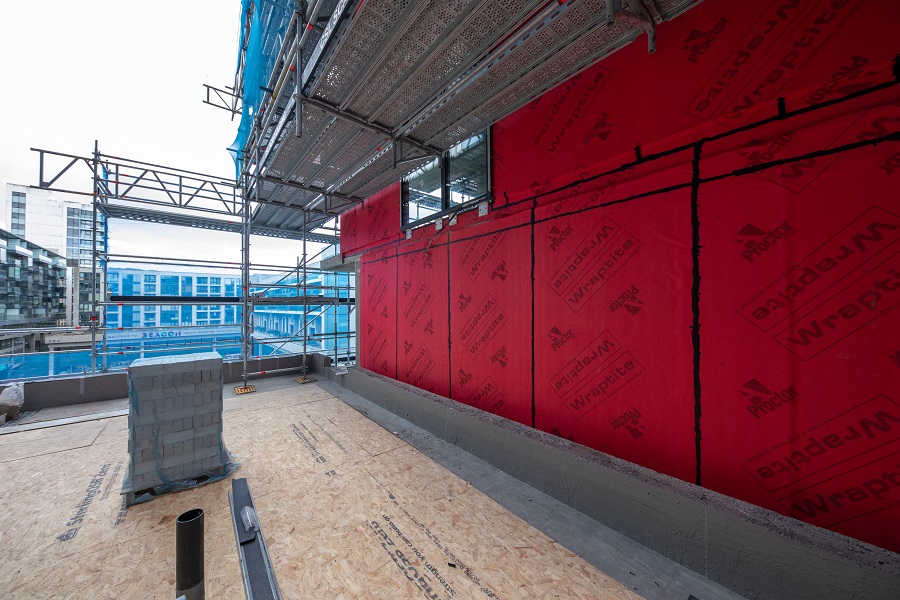Occupants of Moda Living’s 722-home build-to-rent scheme at Great Charles Street in Birmingham will soon enjoy the thermal comfort benefits of airtight building fabric, thanks to installation of the A. Proctor Group’s Procheck® A2 membrane.
The accommodation comprises a mix of one-, two- and three-bedroom apartments, including some penthouses. As of April 2025, work is well under way by Titan Interior Solutions (part of the Horbury Group) to complete the membrane installation as
part of the full internal fit out package on blocks B and C of the project.
